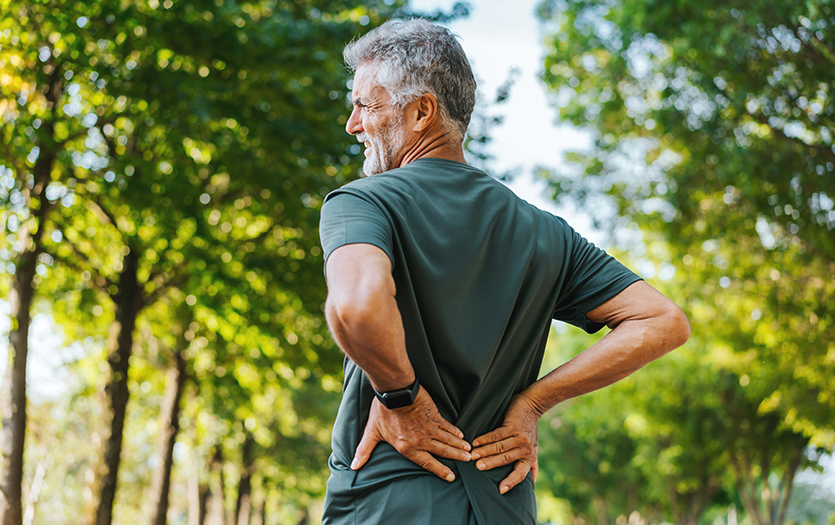
This post was written by Andrius Giedraitis, MD, Pain Management at Parkview Bryan Hospital.
Walking is typically second nature—one foot in front of the other, a rhythm most people perform without thinking. However, when lower back pain arises, this fundamental movement can become a challenging experience. In this post, we'll explore how lower back pain interferes with your ability to walk and what you can do to support better movement during recovery.
Impaired walking
At its core, lower back pain disrupts the body's intricate movement system. Your spine is a dynamic communication network that coordinates every step you take. When pain sets in your body, an immediate protective response is initiated by tensing and contracting muscles around the affected area. This mechanism is designed to prevent further injury, but the added tension triggers a domino effect on walking.
You may notice changes in your gait pattern, like:
-
A slower walking pace
-
A shorter stride
-
Difficulty maintaining balance
-
Decreased range of motion
-
Leaning forward or to one side
Your body creates a biological splint, limiting movement to protect the injured area. While these responses may alleviate discomfort in the back momentarily, they can put additional strain on nearby joints like your hips and knees if they persist.
Corrective measures
There are a few things you can try to help improve the way you move and feel.
-
Practice good posture. Standing tall with your shoulders relaxed and back, engaging your core and maintaining a neutral pelvis helps distribute weight evenly and reduces strain on the spine.
-
Manage pain and stiffness. To reduce inflammation, alternate between applying ice packs and heat as needed. Over-the-counter NSAIDs like ibuprofen and aspirin can also help.
-
Avoid prolonged sitting or resting. Light activity, such as short, frequent walks and gentle stretching, helps keep blood flowing and prevents muscles from stiffening.
-
Wear supportive footwear. Shoes with adequate arch support and shock absorption improve spinal alignment and reduce strain.
Key takeaways
Your body's walking adaptation is ultimately a sophisticated survival mechanism. However, if lower back pain is limiting your mobility and disrupting your quality of life, consulting a pain management specialist is a step in the right direction.
At Parkview Bryan Hospital's Pain Management Clinic in Ohio, our team offers personalized and balanced care, with no referral necessary. To learn more or schedule an appointment with one of our providers, call 419-633-7343.
At PPG—Pain Management in Indiana, appointments are by referral only. If you suspect you need to see a pain management specialist, contact your primary care physician.



